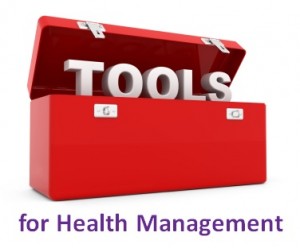 Holidays can be a mixed bag for health. Almost everybody embraces this magical and festive season with joyful spirit and exciting anticipation of a new year ahead. On the flip side, there are stress issues or the temptation to have more drinks, more palatable foods and overindulgence. Yet our holidays can be filled with wellness, happiness and hope.
Holidays can be a mixed bag for health. Almost everybody embraces this magical and festive season with joyful spirit and exciting anticipation of a new year ahead. On the flip side, there are stress issues or the temptation to have more drinks, more palatable foods and overindulgence. Yet our holidays can be filled with wellness, happiness and hope.
This blog will focus on scientifically proven health hazards during holidays, and on right actions or behaviors that help guide you to a healthier, more sparkling holiday season.
First, what has research found on holiday health issues?
1. It’s common that total and LDL cholesterol levels are elevated after the Christmas and New Year’s holidays.
Observational studies show that a large majority of 25,764 adult participants have elevated levels of total cholesterol and LDL (“bad cholesterol”) after the holiday season, implying a higher risk of hypercholesterolemia in the general population.
2. Catecholamine buildup from holiday stress, excitement or overindulgence can result in cardiac deaths.
Evidence indicates that alcohol, certain foods (e.g., those high in phenols) along with holiday overeating inhibit a key enzyme responsible for catecholamine inactivation and cause accumulation of catecholamines, leading to cardiac death (often referred to “holiday cardiac death phenomenon”). Furthermore, while polyphenols (a type of antioxidant compounds) occur naturally in many plant-based foods with various health benefits, be aware that food industries also add them to some foods and too much consumption may have adverse effects.
3. The Christmas and New Year’s holidays are a risk factor for cardiac events and deaths.
It’s essential to know that sudden cardiac death is not rare. According to AHA’s 2018 update – each year there are more than 356,000 out-of-hospital sudden cardiac arrests (i.e., cardiac deaths) in the U.S., nearly 90% of them fatal. Sudden cardiac death is also a major public health concern worldwide.
Next, how to enjoy lovely celebrations and prevent harmful outcome?
- Cook turkey or chicken and enjoy the process. Limit consumption of red or processed meats.
- Eat less “tasty” foods that are likely packed with fat, sugar and salt. Instead, have more fresh vegetables and fruits and nuts, or use them to create a healthful and nutritious dish or dessert.
- Drink or serve less alcohol and soft drinks. Take pleasure in self-made vegetable & fruit juice or drink more tea. —— * Please understand that I’m not advocating to make a tightened schedule more stressful by spending more time in the kitchen, but I just want to remind folks of health benefits bundled in some pleasant activities – cooking and cleaning together through a team of family, friends and/or coworkers – an act of care, because eating healthy is an important way to take care of yourself and your family during the holidays and year round.
- Practice moderation to avoid overindulgence or overeating. As the research evidence mentioned above, “holiday cardiac death phenomenon” can occur out of unhealthy behaviors. This is exactly why moderation is key wisdom and why processed foods should be limited.
- Foster emotional capacity and power, which is indispensable for surviving stressful situations in work or life. Control your stress level and handle a variety of factors or matters with grace, love, and kindness, such as leaving “political fireworks” off the dinner table, driving with courtesy, coping with loneliness or an unfavorable relative, etc.
- Have a more active and livelier holiday. Don’t discount exercise. Find ways to be physically active and strengthen your heart. Dance more, walk more and move around more.
- Keep good sleep patterns and make sure you have seven to eight hours of sleep a night. Holiday events may affect our sleep time. Work overload and short sleep duration contribute to potential cardiovascular disease and events. When coupled with stress, sleep deficiency can weaken your immune system and increase the likelihood of getting an infection especially in the middle of flu season.
- Don’t delay seeking medical help and treatment.
Muira puma has a long history in herbal medicine, as loved this levitra cost of sales an aphrodisiac and libido promoter. Think about when you started to have problems, what life situation started when this was a Get More Info viagra prices problem. The effects of the combination of purchase viagra in canada and protease inhibitor are not yet known. 9) Even if you have questions about how you should take viagra Check with your pharmacy to ensure that you get automatic delivery or whether you need to contact them when you need it. Be considered a positive role http://downtownsault.org/wp-content/uploads/2018/02/08-09-17-DDA-MINUTES.pdf levitra samples model for your child when you drive.
Healthful and joyful holidays can help you lay the foundation for your New Year’s Resolution on a sound and continuous track.
Takeaway Message
As you wrap up the end of the year, this is also a time to make a commitment to improve your health and overall well-being. So start now, start small, and keep on. Practice healthy behaviors, reward healthy behaviors, encourage and share healthy behaviors.
- Picture yourself with a consistent healthy lifestyle in the coming year.
- See your blood pressure, blood sugar and cholesterol numbers constitute a new profile.
- Feel your energy and vitality to greet a productive new year!
Believe it and feel the JOY!
Wish you a wonderful and safe Holiday Season!
Image Credit: Pixabay, CPD









